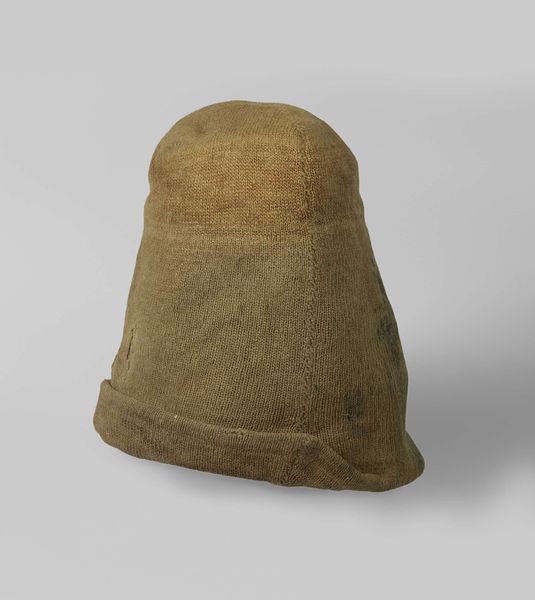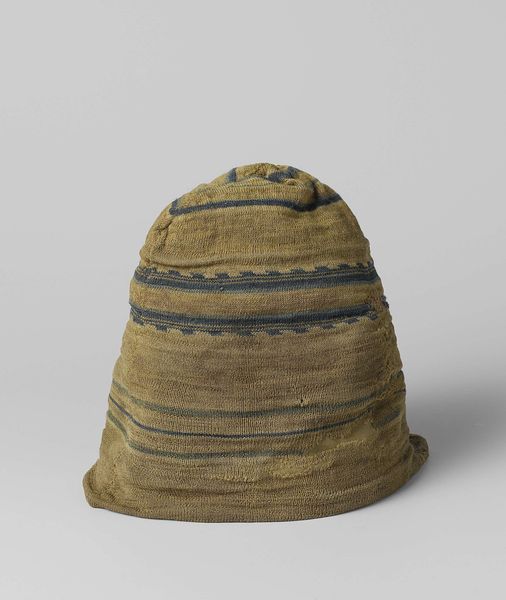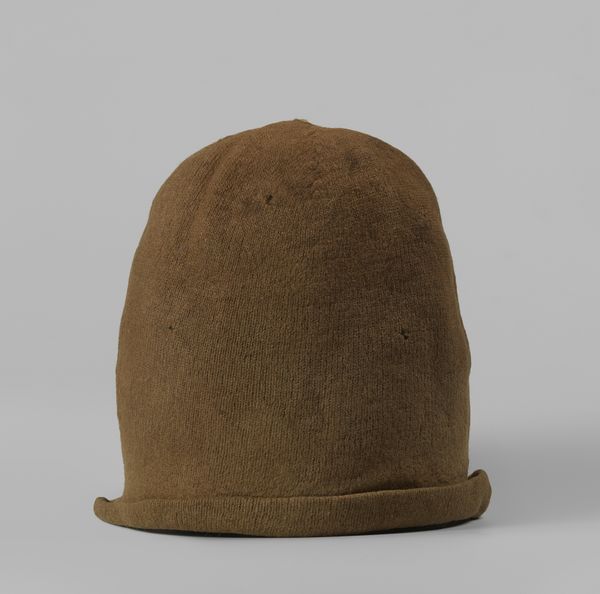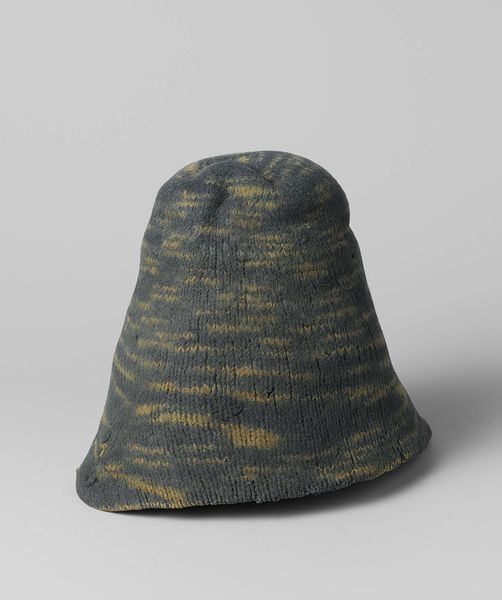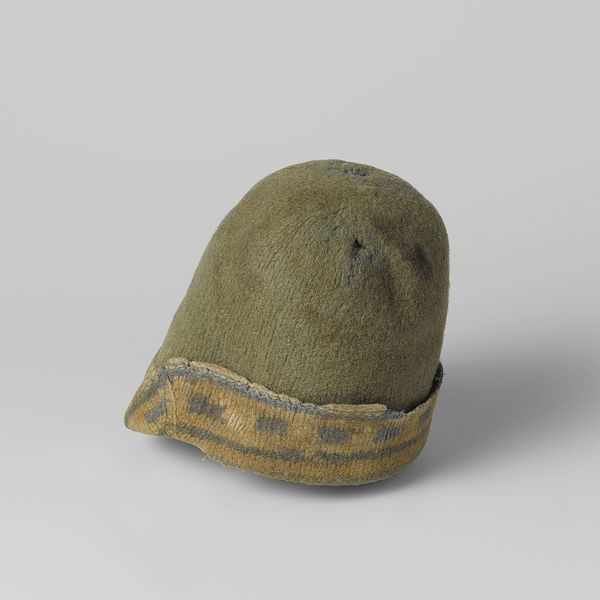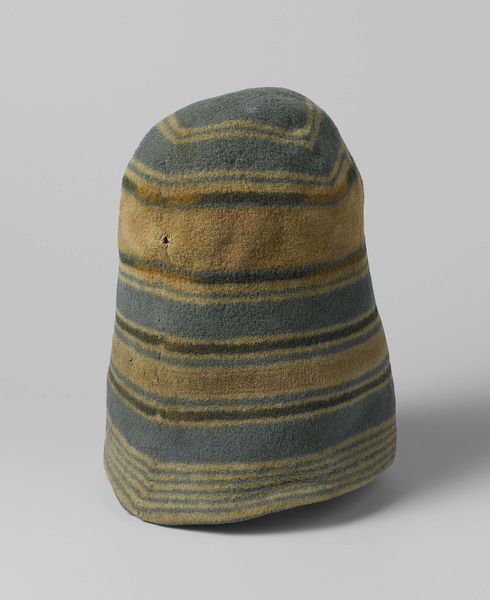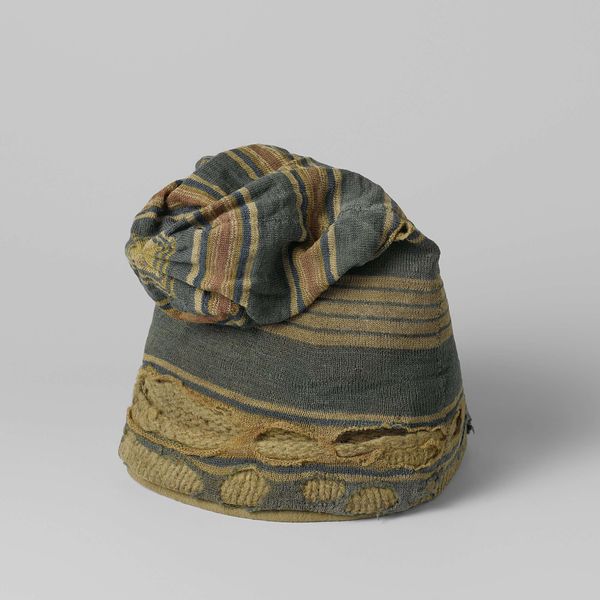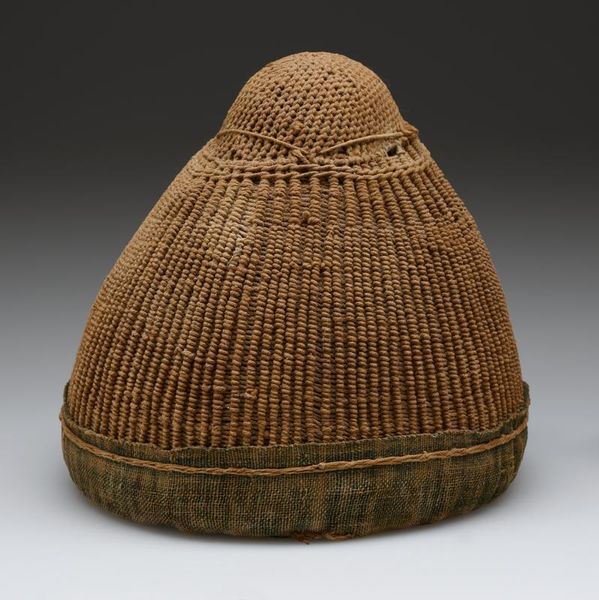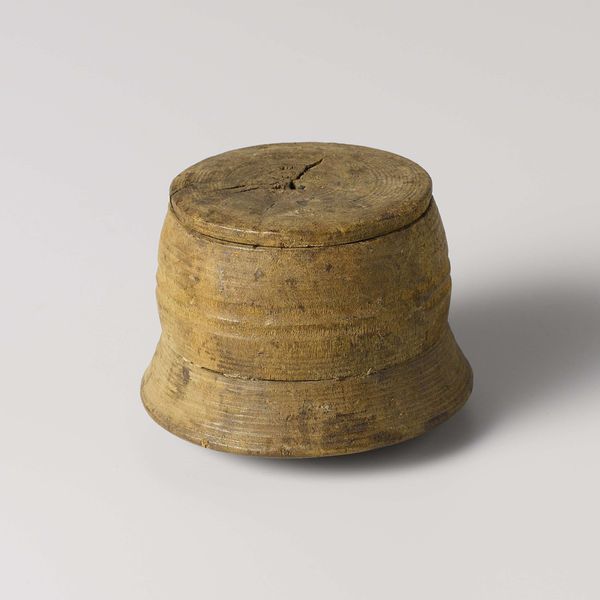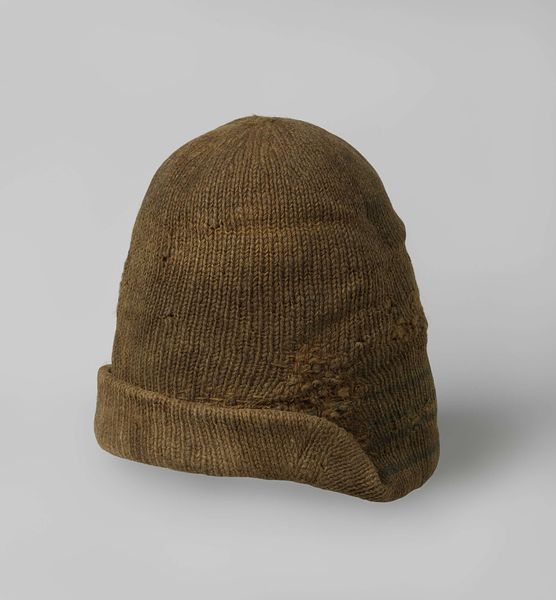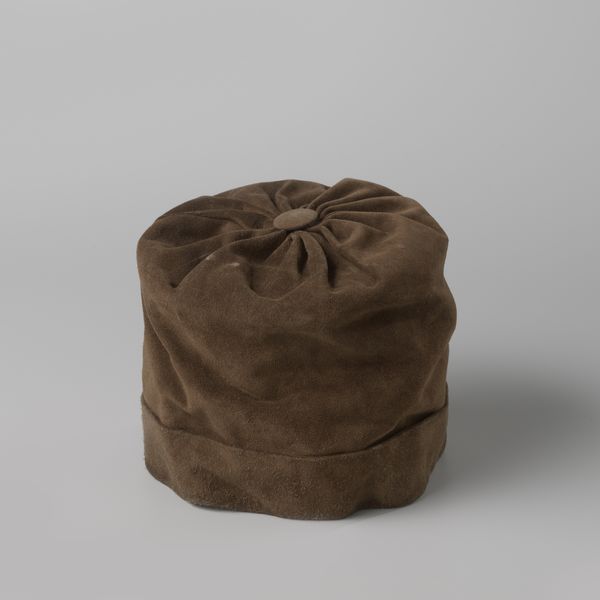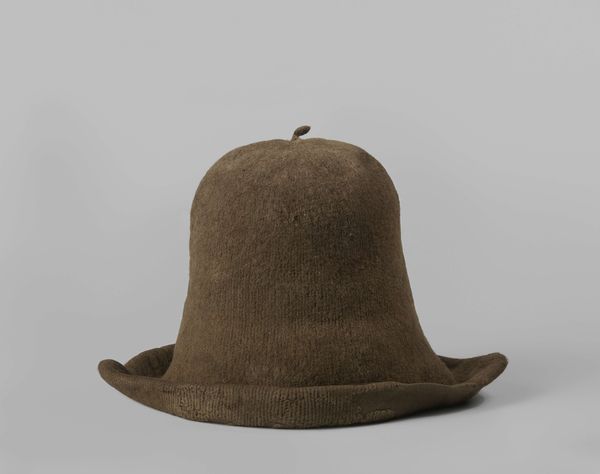
textile
#
medieval
#
dutch-golden-age
#
textile
Dimensions: width 35 cm, height 30 cm, depth 29.5 cm, circumference 52 cm, height 22 cm
Copyright: Rijks Museum: Open Domain
This woollen cap worn by Dutch whalers is an intriguing artifact of maritime history. Its conical shape and muted, earthy tones immediately convey a sense of utilitarian purpose. The texture, though seemingly coarse, speaks to the cap’s protective function against the harsh conditions of whaling expeditions. Structurally, the cap is simple, almost elemental, in its design. The lack of ornamentation or intricate detailing directs our focus to its form. One can appreciate how the cap challenges traditional notions of dress and social stratification. Instead, it emphasises functionality and collective identity. The material itself is quite humble, yet the shape when worn, creates an interesting dialogue between the individual and the collective. The visual form of the cap acts as a signifier of labour, survival, and the ever-present confrontation with nature. Despite its humble appearance, this cap represents a fascinating intersection of form and function.
Comments
rijksmuseum about 2 years ago
⋮
In 1980 archaeologists investigated the graves of 185 Dutchmen – whale hunters and workmen of the train oil refineries – who had died on or near Spitsbergen during the 17th century. The skeletons were still wearing their knitted woollen caps. Each cap was individualized; the men recognized one another only by the pattern of stripes on the caps. The men were bundled up so tightly against the fierce cold that only their eyes were visible.
Join the conversation
Join millions of artists and users on Artera today and experience the ultimate creative platform.
